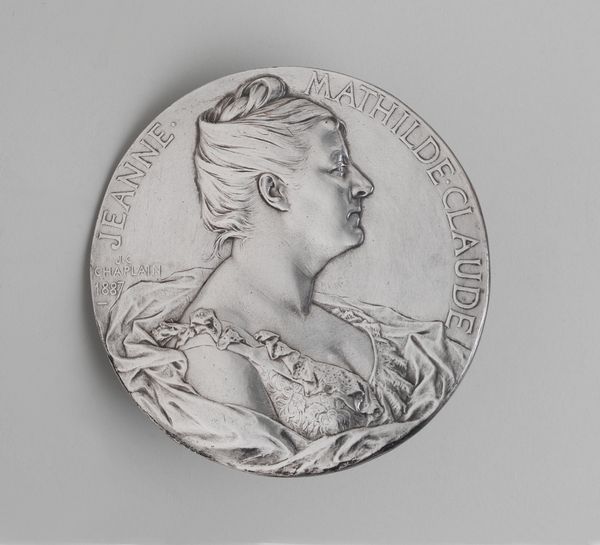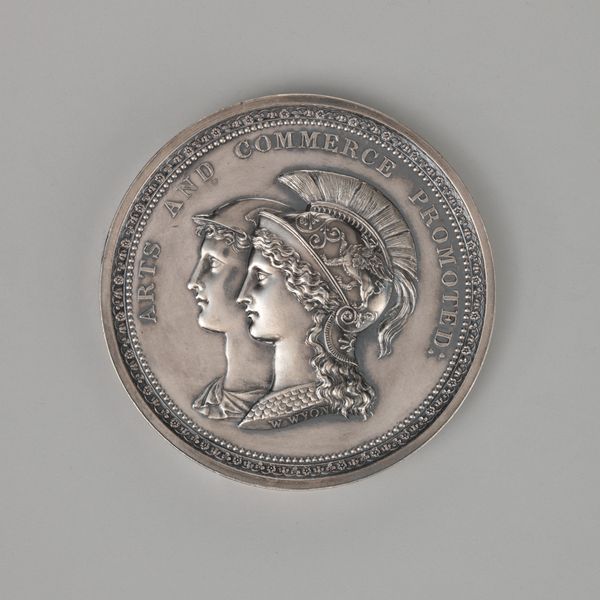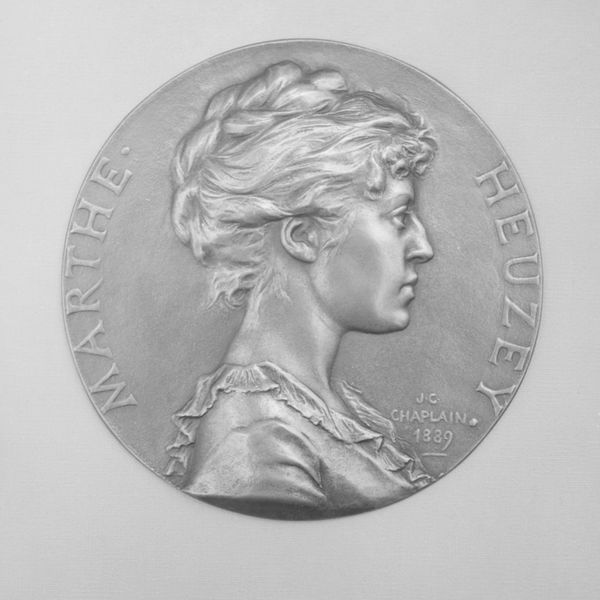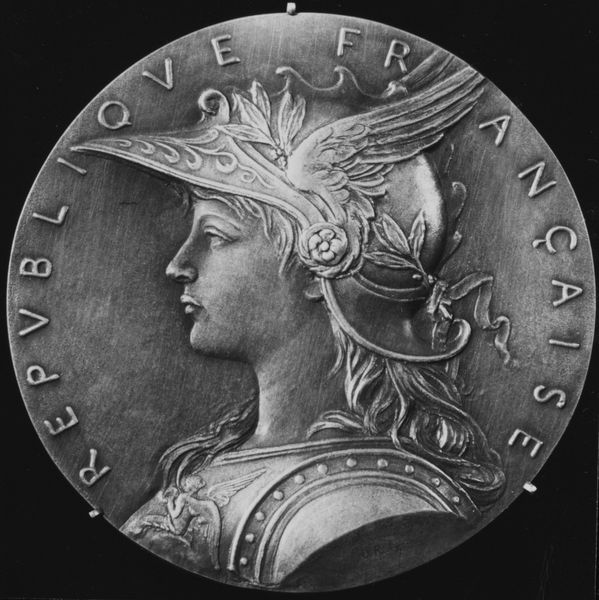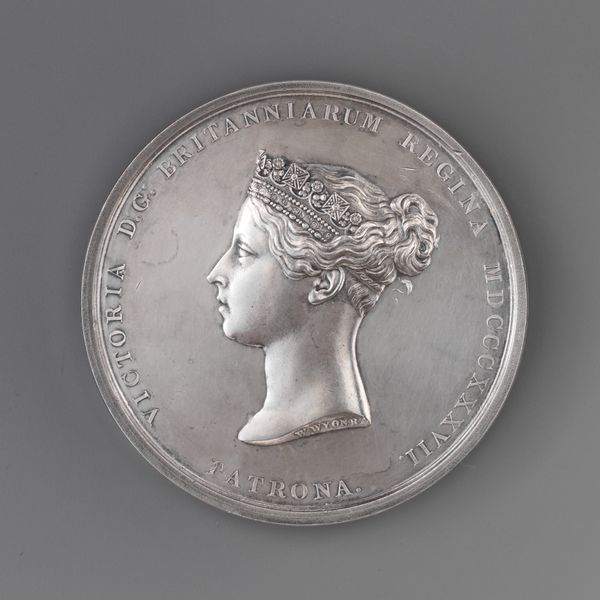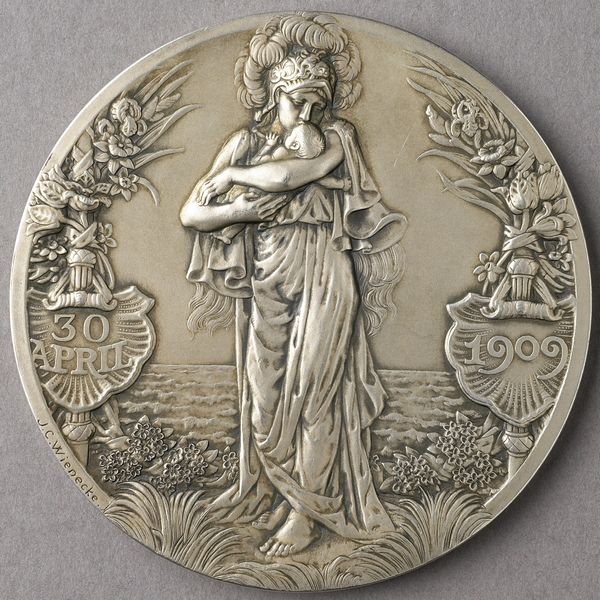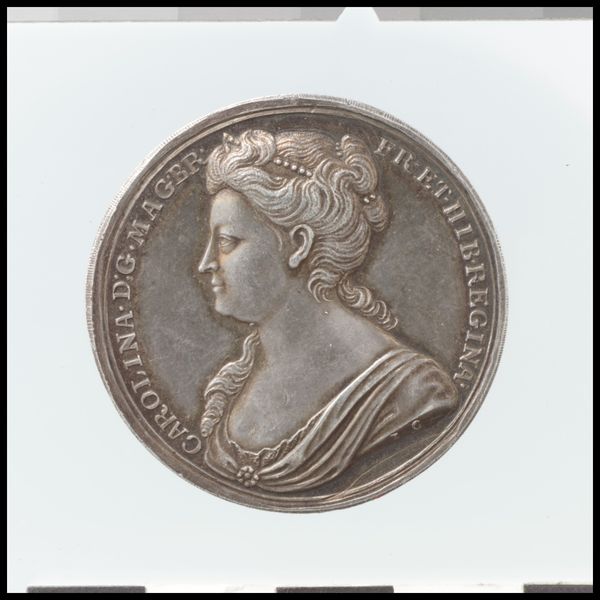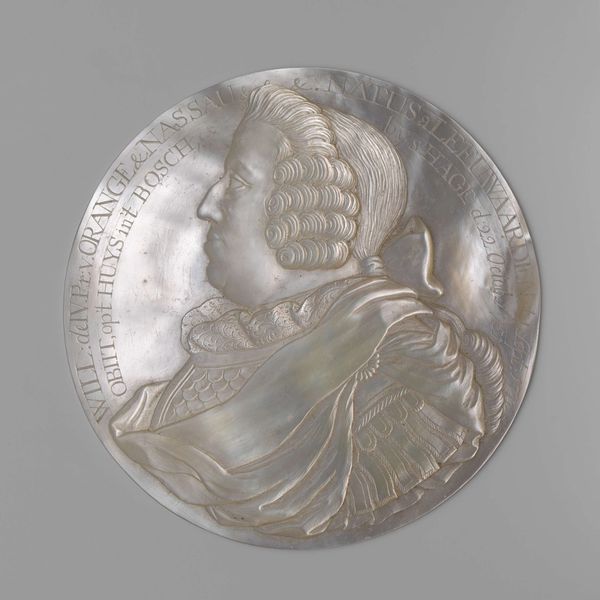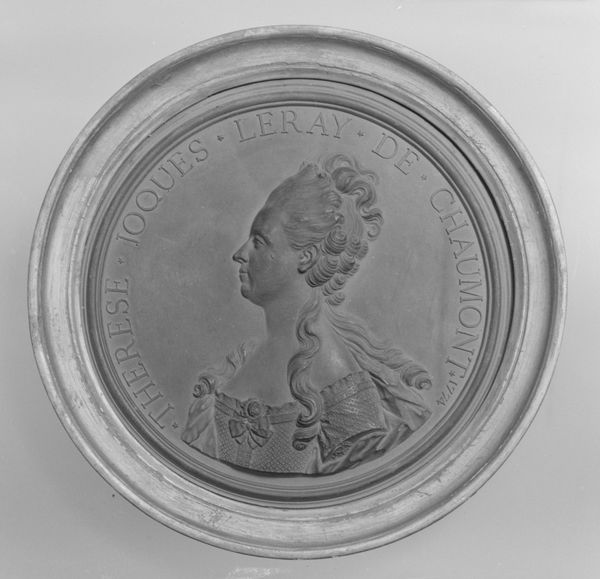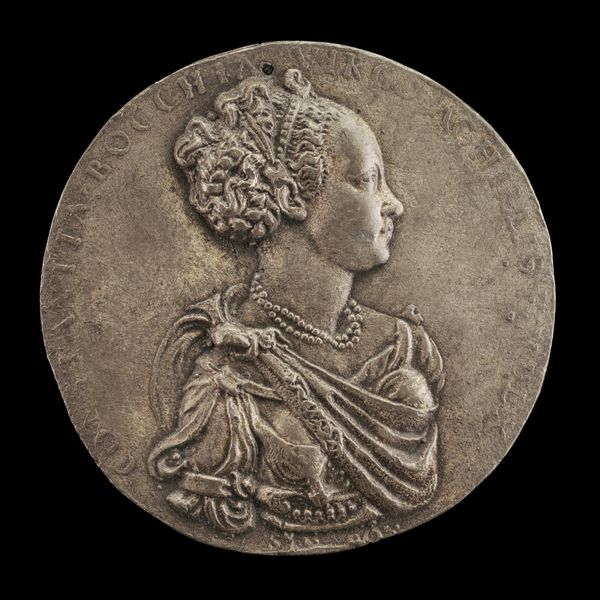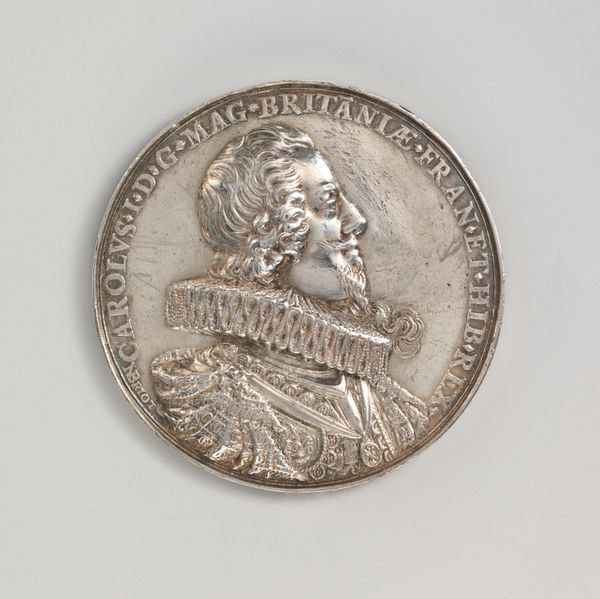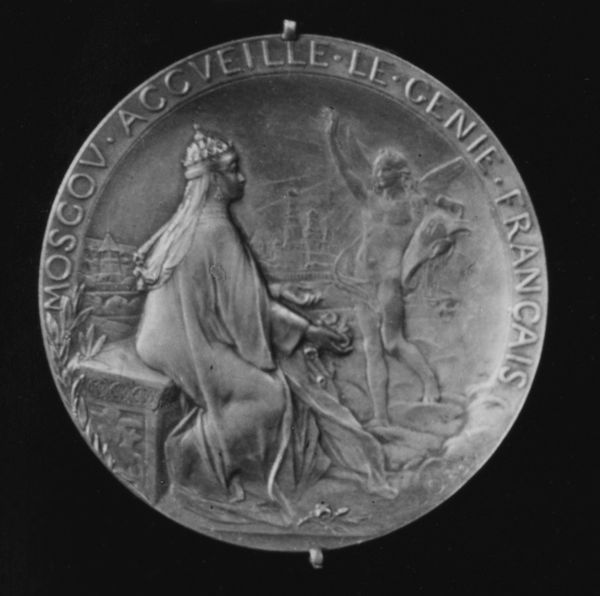
Dimensions: Diameter: 2 11/16 in. (68 mm)
Copyright: Public Domain
Curator: Louis-Oscar Roty designed this relief sculpture entitled "Centenary of the Bank of France," circa 1900. You can find it here at the Metropolitan Museum of Art. Editor: My first impression is one of controlled strength. The piece is formal, with this stoic female figure, yet the details in her armor and helmet suggest movement, almost a latent energy. Curator: Note how the visual vocabulary borrows from Neoclassicism, popular at the turn of the century, but also serves specific symbolic ends for a young Republic finding its footing after years of revolutionary unrest and political turmoil. Editor: Exactly! The woman, helmeted, looking almost like Athena, embodies not only France but also perhaps abstract notions of wisdom, stability, and financial security – key ingredients for confidence in this moment. Even the choice of relief sculpture – a format closely tied to ancient coinage and state emblems – underlines that connection. Curator: The artistry involved in rendering the inscription in such minute detail given the medium deserves appreciation. Also consider the implications of state-sponsored decorative arts; objects such as these become embedded in social ritual, reaffirming notions of value, labor and nationhood itself. Editor: And her gaze is fixed—looking forward. I wonder what anxieties or aspirations the bank hoped to project onto its populace at the time with this commission. Were they successful in crafting an accessible image for everyday consumers? Or did the visual language, steeped as it is in Greco-Roman aesthetics, widen the gap with ordinary life? Curator: Interesting to note also is the use of such historical imagery at the dawn of industrial capitalism and an age of mechanized production. The medal links old regimes with modern aspirations by portraying French commerce through carefully calibrated historical associations. Editor: I agree. Reflecting on Roty’s work helps to reveal just how much visual symbols continue to shape—and sometimes subtly manipulate—our understanding of abstract concepts like “finance” and “national identity.” Curator: For me, understanding the means of production in such commemorative and seemingly benign forms shows us the depth of control wielded over collective historical understanding, an interesting intersection of politics, economics and artistic execution.
Comments
No comments
Be the first to comment and join the conversation on the ultimate creative platform.
